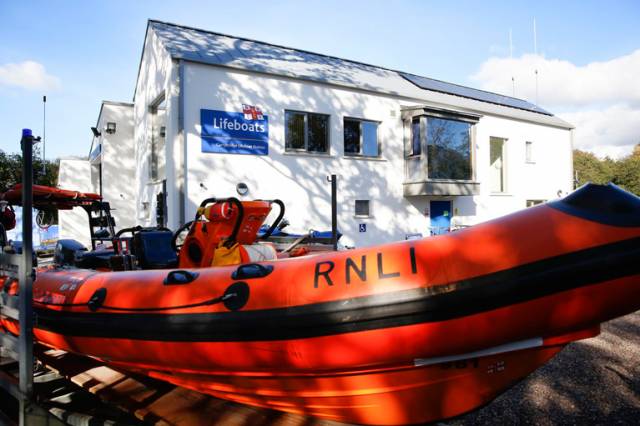Carrybridge RNLI in County Fermanagh launched this morning in response to a report of a gas explosion on a vessel at a marina in Carrybridge.
The volunteer lifeboat crew was requested to launch both their inshore lifeboat and Rescue Water Craft at 11.08am following the report from Belfast Coastguard that the explosion had happened on a vessel thought to have one person onboard.
The lifeboat helmed by Chris Cathcart and with crew members Adrian Quigley and Nigel Carson onboard launched immediately along with the station’s Rescue Water Craft with Kyle Boyd and Jen Bailey onboard.
Weather conditions at the time were overcast with light winds and fair visibility.
With initial unconfirmed reports that someone may be on the vessel, a full search was requested with Carrybridge RNLI as on scene commander.
The Northern Ireland Fire and Rescue Service, Ambulance Service and the PSNI attended while the Irish Coast Guard Rescue 118 helicopter from Sligo was also tasked.
During the search, the lifeboat learned that a man who had been on the boat had been removed from the scene prior to the emergency services arrival by a member of the public from the shoreline and was taken to hospital for further treatment.
Following the completion of a full search, all agencies were stood down.
Speaking following the call out, Carrybridge RNLI Helm Chris Cathcart said: ‘We would like to wish the man who had been on the boat well following what must have been a frightening experience for him. We would also like to commend the member of the public on the shore who came to his assistance. Today’s call out was a good example of multiple agencies responding well together.
‘We would remind all visitors to the lough during the boating season to ensure they do regular checks on their vessels so everything is in working order. When on the water, always wear a lifejacket and always have a means for calling for help. Always check the weather and tide times and make sure someone ashore knows where you are going and who to call if you don’t return on time. Should you get into difficulty, call 999 or 112 and ask for the Coastguard.’
Carrybridge RNLI Respond to Gas Explosion on Vessel on Upper Lough Erne
 Carrybridge RNLI
Carrybridge RNLI

About The Author
Afloat.ie Team
Afloat.ie is Ireland's dedicated marine journalism team.
Have you got a story for our reporters? Email us here.
We've got a favour to ask
More people are reading Afloat.ie than ever thanks to the power of the internet but we're in stormy seas because advertising revenues across the media are falling fast. Unlike many news sites, we haven’t put up a paywall because we want to keep our marine journalism open.
Afloat.ie is Ireland's only full–time marine journalism team and it takes time, money and hard work to produce our content.
So you can see why we need to ask for your help.
If everyone chipped in, we can enhance our coverage and our future would be more secure. You can help us through a small donation. Thank you.






























































